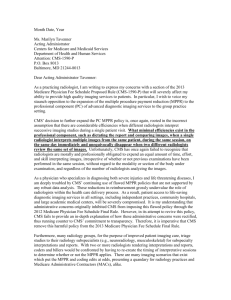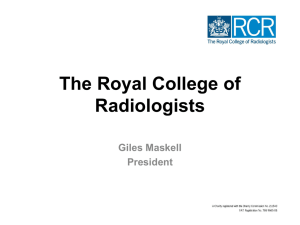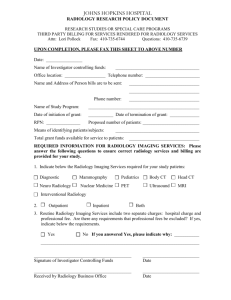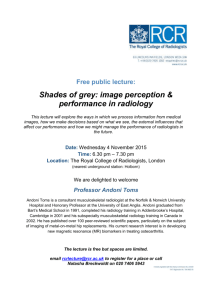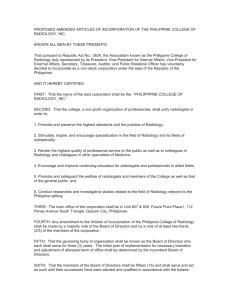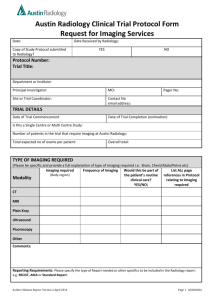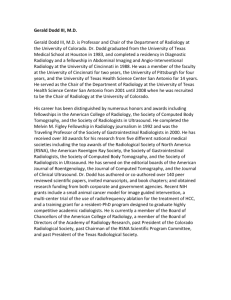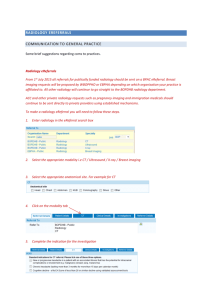CMS Comment Letter Template
advertisement
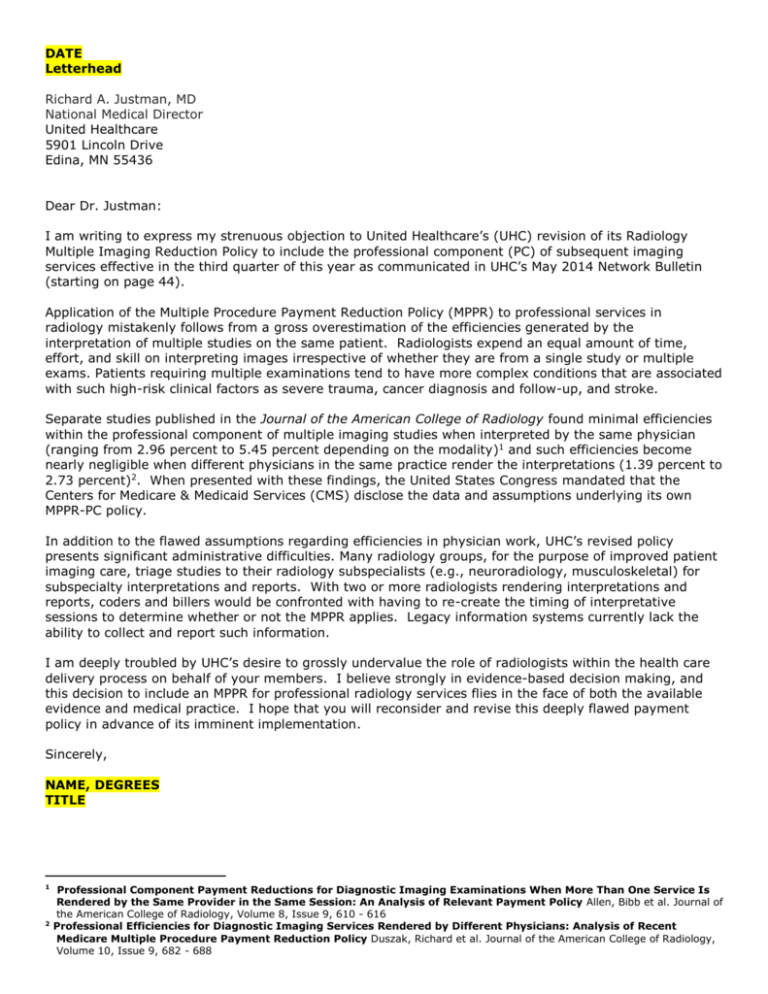
DATE Letterhead Richard A. Justman, MD National Medical Director United Healthcare 5901 Lincoln Drive Edina, MN 55436 Dear Dr. Justman: I am writing to express my strenuous objection to United Healthcare’s (UHC) revision of its Radiology Multiple Imaging Reduction Policy to include the professional component (PC) of subsequent imaging services effective in the third quarter of this year as communicated in UHC’s May 2014 Network Bulletin (starting on page 44). Application of the Multiple Procedure Payment Reduction Policy (MPPR) to professional services in radiology mistakenly follows from a gross overestimation of the efficiencies generated by the interpretation of multiple studies on the same patient. Radiologists expend an equal amount of time, effort, and skill on interpreting images irrespective of whether they are from a single study or multiple exams. Patients requiring multiple examinations tend to have more complex conditions that are associated with such high-risk clinical factors as severe trauma, cancer diagnosis and follow-up, and stroke. Separate studies published in the Journal of the American College of Radiology found minimal efficiencies within the professional component of multiple imaging studies when interpreted by the same physician (ranging from 2.96 percent to 5.45 percent depending on the modality)1 and such efficiencies become nearly negligible when different physicians in the same practice render the interpretations (1.39 percent to 2.73 percent)2. When presented with these findings, the United States Congress mandated that the Centers for Medicare & Medicaid Services (CMS) disclose the data and assumptions underlying its own MPPR-PC policy. In addition to the flawed assumptions regarding efficiencies in physician work, UHC’s revised policy presents significant administrative difficulties. Many radiology groups, for the purpose of improved patient imaging care, triage studies to their radiology subspecialists (e.g., neuroradiology, musculoskeletal) for subspecialty interpretations and reports. With two or more radiologists rendering interpretations and reports, coders and billers would be confronted with having to re-create the timing of interpretative sessions to determine whether or not the MPPR applies. Legacy information systems currently lack the ability to collect and report such information. I am deeply troubled by UHC’s desire to grossly undervalue the role of radiologists within the health care delivery process on behalf of your members. I believe strongly in evidence-based decision making, and this decision to include an MPPR for professional radiology services flies in the face of both the available evidence and medical practice. I hope that you will reconsider and revise this deeply flawed payment policy in advance of its imminent implementation. Sincerely, NAME, DEGREES TITLE 1 2 Professional Component Payment Reductions for Diagnostic Imaging Examinations When More Than One Service Is Rendered by the Same Provider in the Same Session: An Analysis of Relevant Payment Policy Allen, Bibb et al. Journal of the American College of Radiology, Volume 8, Issue 9, 610 - 616 Professional Efficiencies for Diagnostic Imaging Services Rendered by Different Physicians: Analysis of Recent Medicare Multiple Procedure Payment Reduction Policy Duszak, Richard et al. Journal of the American College of Radiology, Volume 10, Issue 9, 682 - 688


